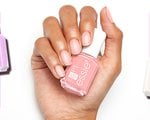How to Clean Every Makeup Tool in Your Kit
June 25, 2020
How to Clean a Makeup Sponge
STEP #1: Wet Your Sponge
Run the sponge under warm water. Make sure it gets fully soaked.
STEP #2: Lather
Use a few drops of mild soap or gentle shampoo and work any product out of the sponge with your fingers. You may need to repeat this step a few times if you haven’t cleaned your sponge in a while.
STEP #3: Rinse
Rinse the sponge until the water runs clear. Make sure you squeeze throughout the process to get all the suds out.
STEP #4: Dry
Wring out the excess water and pat dry with a clean towel. Allow the sponge to air dry, or if you prefer to use it damp, go ahead and put it to work.
STEP #5: Repeat Every 3 to 4 Uses
Make sure you are cleaning your makeup sponges every few uses or once there is no longer a clean, unused section. Rinsing the sponge with warm water after each use will also help keep the germs away and your sponge in good condition.
STEP #6: Check for Mold
If your sponge is never left to dry, it may have begun to grow mold. If you suspect this may be the case, cut open the sponge to see if any has grown. If you find mold inside, discard the sponge immediately. If it appears clean and mold-free, you can continue to use the sponge pieces.
How to Clean Your Makeup Brushes
STEP #1: Rinse
Rinse the bristles with the water streaming down. You want to avoid running water directly into the base of the brush, which can weaken the glue and shorten the lifespan of your brush.
STEP #2: Cleanse
Work a small amount of gentle shampoo or soap into the bristles. Lather, rinse and repeat until the water runs clear. If you are having a hard time getting stubborn product out of your brush, massage some coconut oil into the bristles. This will loosen the buildup and make cleansing easier.
STEP #3: Disinfect
Now that your brushes are clean, it’s time to disinfect. Mix a solution of 2 parts water and 1 part vinegar in a shallow bowl. Swoosh the brush around in the bowl for a minute or two (again, trying not to submerge it fully). Then, rinse with fresh water.
STEP #4: Dry
Press a dry towel into the bristles to soak up excess water. Reshape the bristles into their original form and lay them flat on a towel overnight to dry.
STEP #5: Repeat Every Other Week
Clean your brushes every other week to keep the germs away from your makeup and off your skin.
How to Clean Your Hairbrush
STEP #1: Remove the Hair
Remove as much hair from the bristles as you can. Using a comb or toothpick can help you grab what your fingers may miss.
STEP #2: Soak
Fill a bowl with water and add a few drops of clarifying shampoo (the L’Oréal Paris Elvive Extraordinary Clay Rebalancing Shampoo is one of our faves). If your brush is plastic, soak it for three to five minutes. If your brush has a fabric head, do not soak it, but dip the bristles in the water a few times. If you don’t have a clarifying shampoo, you can use a solution of vinegar diluted in water.
STEP #3: Scrub
To get those bristles good as new, take an unused toothbrush, wet it with the soapy water and give the bristles a good scrub. This is especially important if you have any product buildup on the brush. Rinse with fresh water.
STEP #4: Dry
Lay the brush bristle-side down on a towel to allow water to drain out of the base. Leave it to dry overnight.
STEP #5: Repeat Every Month
Give your brush a bath once a month to prevent product buildup.
How to Clean Your Metal Beauty Tools
STEP #1: Wash
For metal tools like tweezers, eyelash curlers, eyebrow trimmers, cuticle nippers and nail clippers, wash them down using water and antibacterial soap. Pat dry with a clean towel.
STEP #2: Sanitize
Thoroughly wipe down the tool with an alcohol-soaked cotton ball. Allow it to dry for a few moments. If the tool comes in contact with your face, rinse it with water (no need to rinse your nail tools). Pat dry with a clean towel.
STEP #3: Repeat After Every Use
Ideally, these types of beauty tools should at least be washed with soap and water after each use, if not sanitized as well. Aim to give them the full treatment every two weeks, and store your tools in a clean container.
































